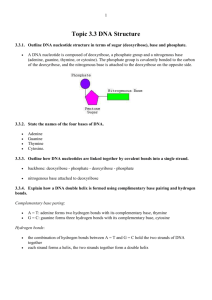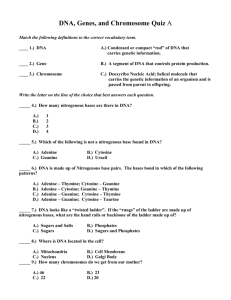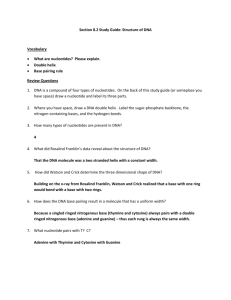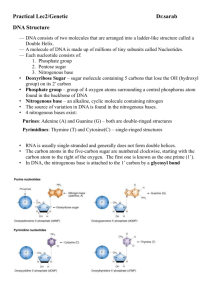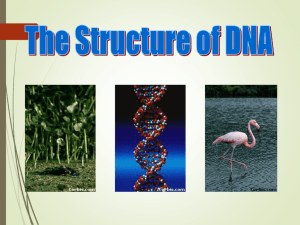Lab - What is a Nucleic Acid?
advertisement
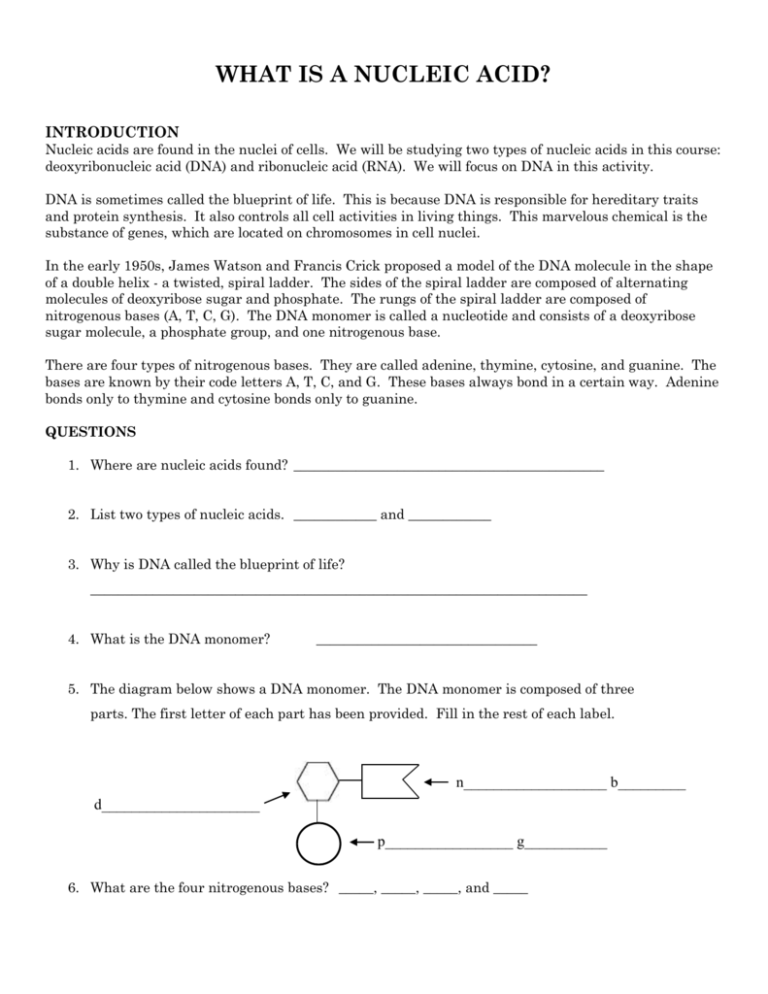
WHAT IS A NUCLEIC ACID? INTRODUCTION Nucleic acids are found in the nuclei of cells. We will be studying two types of nucleic acids in this course: deoxyribonucleic acid (DNA) and ribonucleic acid (RNA). We will focus on DNA in this activity. DNA is sometimes called the blueprint of life. This is because DNA is responsible for hereditary traits and protein synthesis. It also controls all cell activities in living things. This marvelous chemical is the substance of genes, which are located on chromosomes in cell nuclei. In the early 1950s, James Watson and Francis Crick proposed a model of the DNA molecule in the shape of a double helix - a twisted, spiral ladder. The sides of the spiral ladder are composed of alternating molecules of deoxyribose sugar and phosphate. The rungs of the spiral ladder are composed of nitrogenous bases (A, T, C, G). The DNA monomer is called a nucleotide and consists of a deoxyribose sugar molecule, a phosphate group, and one nitrogenous base. There are four types of nitrogenous bases. They are called adenine, thymine, cytosine, and guanine. The bases are known by their code letters A, T, C, and G. These bases always bond in a certain way. Adenine bonds only to thymine and cytosine bonds only to guanine. QUESTIONS 1. Where are nucleic acids found? _____________________________________________ 2. List two types of nucleic acids. ____________ and ____________ 3. Why is DNA called the blueprint of life? ________________________________________________________________________ 4. What is the DNA monomer? ________________________________ 5. The diagram below shows a DNA monomer. The DNA monomer is composed of three parts. The first letter of each part has been provided. Fill in the rest of each label. n___________________ b_________ d_____________________ _ p_________________ g___________ 6. What are the four nitrogenous bases? _____, _____, _____, and _____ 7. How do the nitrogenous bases bond? _____ to _____ and _____ to _____ BUILDING A MODEL The diagram below shows a small portion of a DNA double helix that has been flattened. Label each part of the diagram with the appropriate letter: phosphate (P), deoxyribose (D), thymine (T), adenine (A), cytosine (C), and guanine (G). You have built molecules of carbohydrates, lipids, and proteins using the small chemical models. Provide two reasons why do we not build DNA using these molecules?




